
In a country where English is not the official language, road signs in Japanese are so confusing to those unfamiliar with the language. Even some are so crazily written that it is hard to understand by all. It is supposed to be clear and easy to understand but rather confusing as more new signs pop up often. And some are different from the ones often seen in your home country. Here are some of the basic road signs that drivers should be familiar with.
-
01
Left Hand Traffic
Roads in Japan use the left hand traffic where the cars drive on the left side of the road and have the driver's seat and steering wheel on their right side. The legal age of driving is 18 years old with drinking and driving is strictly prohibited. (Legal age of drinking in Japan is 20).
-
02
Speed Limit
For ordinary roads, the speed limit is 60km/h. However, in Japan, there are speed limit signs all over the town, mainly around 40 to 50km/h and inside streets between 20 to 30km/h.
![]()
-
03
Causing Confusion To U.S drivers
Especially to American drivers, the inverted triangle shaped “slow down” sign (徐行) at glance looks very similar to the “yield” sign seen on roads in the United States. However in Japan, all cars must slow down to drive at a speed where drivers can immediately stop when necessary, whereas, in the U.S, drivers aren't required to come to a complete stop and may proceed without stopping, provided that it is safe to do so.
![Slow Down (徐行) Sign]()
Slow Down (徐行) Sign
![Yield Sign]()
Yield Sign
There are states in the United States that allow you to turn left on a red light. However, in Japan, a red light means red. All drivers can not turn left on a red light even if there is no traffic coming through. However, if there is a green arrow below, you can turn only in the direction indicated by the arrow even if the traffic light is red.
![]()
And if there is a rectangular blue sign with a white arrow pointing left, a left turn is okay, regardless of what the traffic light says. But, driver should check for safety when turning left on red as there might be pedestrians walking by.
![]()
No overtaking signs in the United States is written as “Do Not Pass” in words. However in Japan, it is in a pictogram with two curved arrows with a red diagonal line. Just like in the United States, it is illegal to pass another car on a road with this sign. However, there are two types of this sign in Japan with a slight difference. If the sign is just a pictogram, overtaking other cars on the right is allowed if not going over the line in the center of the road. If the no overtaking sign has a Japanese word “追い越し禁止” written below, overtaking other cars on the right is strictly forbidden.
![]()
-
04
Causing Confusion To UK drivers
Either horizontally or vertically, the traffic lights sequences are more less universal with green, amber/yellow and red. However, for those UK drivers, when they first drive in Japan, these traffic lights sequences may be shocking. After red, Japan immediately goes to green whereas in the UK, it goes by red, red and amber or flashing amber to announce the driver to prepare to pull away. And then, finally, green to go.
![]()
No overtaking signs in most European countries use a pictogram of two cars, left being red and the right, black. However in Japan, it is in a pictogram with two curved arrows with a red diagonal line. Just like in the European countries, it is illegal to pass another car on a road with this sign. However, there are two types of this sign in Japan with a slight difference. If the sign is just a pictogram, overtaking other cars on the right is allowed if not going over the line in the center of the road. If the no overtaking sign has a Japanese word “追い越し禁止” written below, overtaking other cars on the right is strictly forbidden.
![]()
-
05
Common Regulatory Signs
Stop (止まれ)
“STOP” signs show a red upside-down triangle where it is written “止まれ” however, with the increasing number of foreign tourists, Japanese governments are making improvements regarding the road signs. That being said, some might contain the words "STOP" beneath the Japanese word.![]()
No Entry (進入禁止)
No-entry signs come with either written words or just a sign with a symbol in red with a white horizontal line on it. Both of these signs prohibit any kind of vehicle to enter the road or the area.![]()
One Way (一方通行)
This white arrow in a blue sign means one-way traffic and you are allowed to go in the direction in which the arrow points. However, those unfamiliar with Japanese may get this sign confusing when a Japanese word like “自転車”, “原付”, “自動車” etc. are written below. There are two meanings, one means to exclude the type of vehicles written together with the word "除く". The other means apply to the type of vehicles written.![Apply to all vehicles]()
Apply to all vehicles
![Apply to mopeds and motor vehicles]()
Apply to mopeds and motor vehicles
![Exclude bicycle, apply to mopeds and motor vehicles]()
Exclude bicycle, apply to mopeds and motor vehicles
No Parking/Stopping
The red circle sign with a blue background crossed by a diagonal red line indicates that parking is not allowed. However, a vehicle may stop up to 5 minutes for loading and unloading provided that the driver is present at all times.
If there are two diagonal lines inside the red circle sign with a blue background, similar to the no stopping sign, it means parking or stopping is not allowed at all times.![No parking]()
No parking
![No parking and stopping]()
No parking and stopping
Road Closed
Not only to vehicles but also to pedestrians, this red circle sign with a white background and two crossing diagonal lines with a word “通行止め” below indicate that the road is closed.
On the other, a similar road sign with only a single diagonal line means the road is closed to vehicles but not to pedestrians.![Closd to vehicles and pedestrians]()
Closd to vehicles and pedestrians
![Closed to vehicles but not to pedestrians]()
Closed to vehicles but not to pedestrians
-
06
Parking on the Street
Curb Striping colors come in yellow and white in Japan which tells whether parking or stopping on the street is allowed or not. There are two types of yellow, one being solid yellow which strictly prohibits cars from stopping and parking. The other being a dotted yellow line that allows the cars to stop but not to park. Just like yellow, there are few variations to the white line, which can get a bit tricky.
A solid white line means drivers can park inside the white line but would need to leave a 0.75m space on the sidewalk. If there is not enough space, then a driver will have to park along the white line. If there are two solid white lines or a solid and a dotted line, drivers can not park inside the line as it is considered a sidewalk. Therefore, drivers will need to park along the white line.![]()
When parking on a street with a parking meters, all drivers must buy tickets and place the tickets behind the windshield clearly. Japan is very strict about this and there are parking enforcement officers patrolling nearby often.
![]()
Parking is strictly forbidden if there is a "路上駐車禁止" or "駐車禁止" (no parking) sign which comes in many different forms. It is better advised to see what's written.
![]()
-
07
Train Crossing
Especially in the suburban and rural areas, drivers often come across level-crossings at train tracks with a yellow rhombus sign with a picture of a train. Unlike other countries, by law in Japan, even if no trains are approaching and the barriers are up, all vehicles are required to stop and come to a complete stop. Drivers must visually check for trains before proceeding.
![]()
-
08
Driving Stickers in Japan
These five stickers have been recommended to be put on the car if it applies to a driver.
The green leaf-shaped one is for those who just obtained their license or have been driving less than a year.
The four-leafed clover is for those drivers over 70. Some still use the older version in a teardrop-shaped with the left orange and the right yellow.
The butterfly one is for drivers with hearing disabilities. The white clover in a blue circle is for general handicapped drivers. And lastly, the sticker with the wheelchair is not necessarily a driving sticker but some prefer to put this sticker to let others know that a person with a disability is riding in the car.![]()
-
09
Misleading Signs
Some signs are so similar in the illustration that it is difficult to tell the difference at first glance. One way traffic and only designated direction(s) permitted has the exact same blue background with white arrow. The main difference between the two is the shape of the sign, the former being rectangular and the latter being round. While the one-way traffic sign allows the driver to go in the direction in which the arrow points and can turn right or left while proceeding in the direction of the arrow, the only designated direction(s) permitted sign allows traffic only in the direction of the arrow.
![]()
A left turn ok sign is very similar to a one-way sign with only the colors flipped. The left turn ok sign with blue arrow on white background allows the driver to turn left regardless of the traffic light. Even if the traffic light in front of you is red, you can still make a left turn after checking the safety of the road.
![]()
Both Road Closed and No Parking are prohibitory road signs with a thick red circle with a single diagonal line. The main difference is that the No Parking is blue.
While the Road Closed signs are mainly used in pedestrian zones and construction sites, and prohibit the passage of vehicles, mopeds, and light vehicles, the No Parking sign prohibits just the parking of vehicles. If a number is written above the sign, it means that parking is prohibited during that time.![]()
Anshin Oyado Tokyo Shinjuku Station - Male Only
4-2-10 Shinjuku-ku Tokyo

-

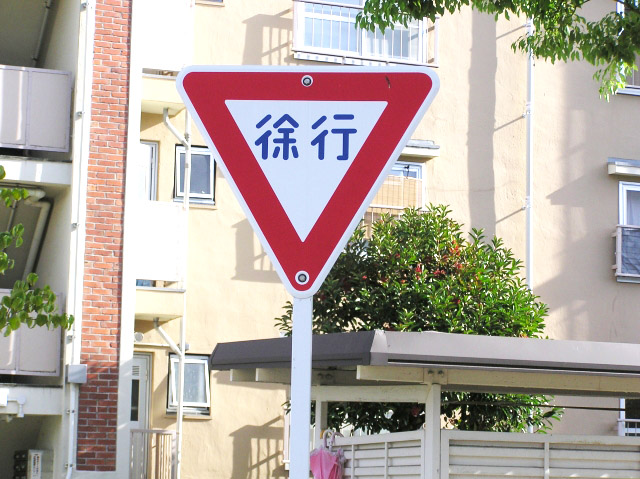








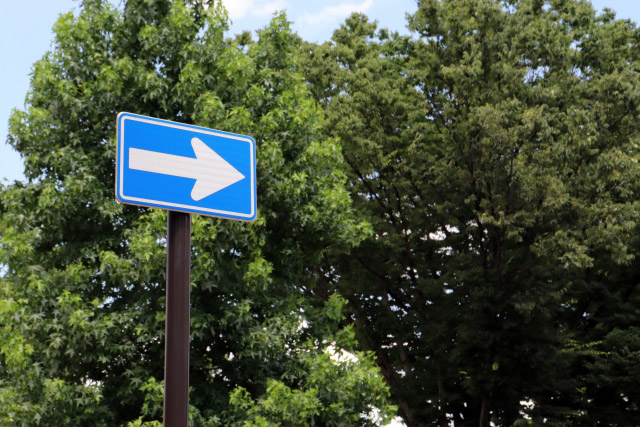


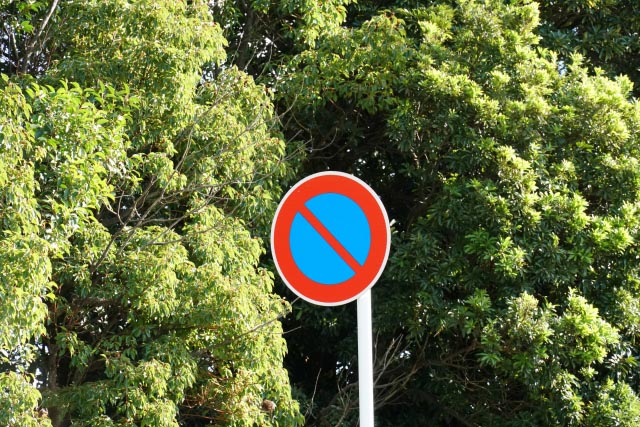
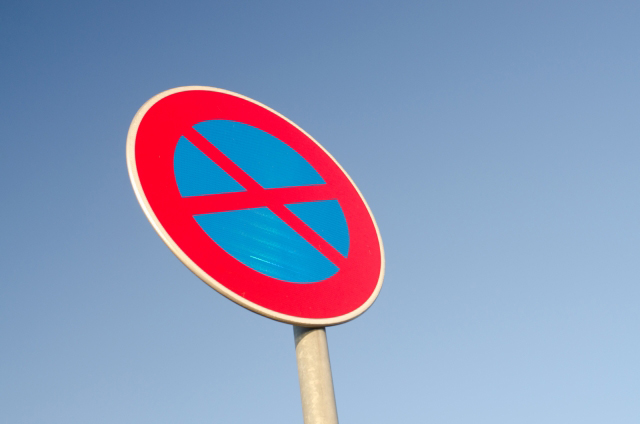

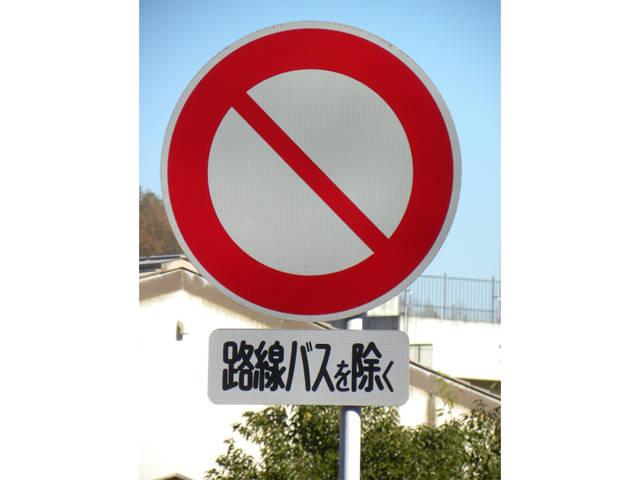









 Go here
Go here










